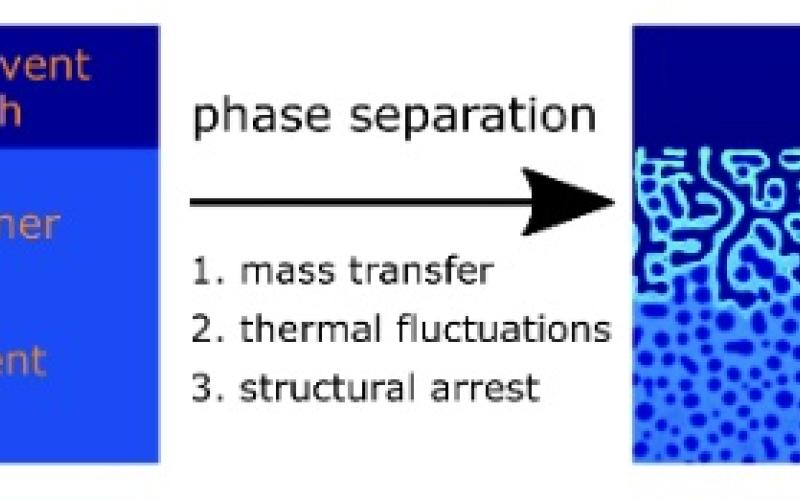
Scientific Achievement
Phase-field simulations demonstrate that mass-transfer-driven spinodal decomposition, thermal fluctuations, and structural arrest are essential to the formation of asymmetric polymer membranes in the Nonsolvent-Induced Phase Separation process.
Image: Schematic of Nonsolvent-Induced Phase Separation. Polymer-rich phase is light green. Polymer-poor phase is dark blue.
Significance and Impact
Improved understanding of membrane formation helps scientists and membrane manufacturers target desired pore structures for optimal separations.
Research Details
- A polymer-rich skin forms in the interface between the film and the nonsolvent bath. Thermal fluctuations introduce perforations on the skin before its vitrification.
- Nonsolvent diffusion leads to the propagation of a phase-separation front into the film. Vitrification of the polymer-rich phase leads to structural arrest.
- Dynamics of phase separation and structural arrest determine the final pore structure.
Jan Ulric Garcia, et al., Macro Letters 9, 1617 (2020).
Work was performed at the University of California, Santa Barbara.

